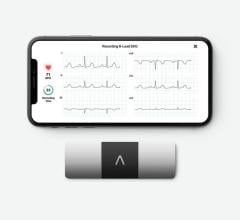
The U.S. Food and Drug Administration (FDA) said it is amending the classification regulation for electrocardiograph (ECG) electrodes into a class II device category, exempting these devices from FDA clearances. This rule is effective as of Aug. 22, 2011.
The move means electrodes will no longer have to meet 510(k) premarket notification requirements. Instead, they will be subject to the new special controls described in the document entitled “Guidance for Industry and Food and Drug Administration Staff: Class II Special Controls Guidance Document: Electrocardiograph Electrodes.'' As described, the special controls include the following:
• Documentation of device description, which includes compliance with 21 CFR 820.181(a) to maintain a device master record
• Documentation of performance characteristics, which includes documentation on biocompatibility, electrical performance, adhesive performance, shelf life, reuse, electrodes intended for use in specified procedures, sterility and compliance with 21 CFR part 898
• Specific labeling, including indications for use, cautions, precautions, and adverse reactions.
Manufacturers must comply with the special controls as identified in the document, either by meeting the recommendations or by some other means that provides equivalent assurance of safety and effectiveness.
The FDA classifies an ECG electrode as intended to acquire and transmit the electrical signal at the body surface to a processor that produces an ECG or vectorcardiogram.
For more information: www.gpo.gov


 November 21, 2023
November 21, 2023 








